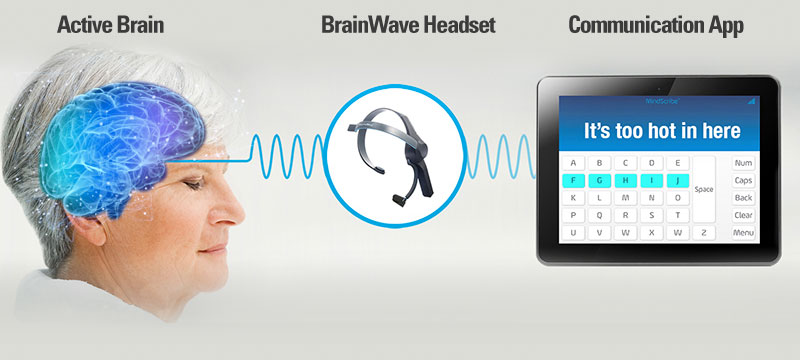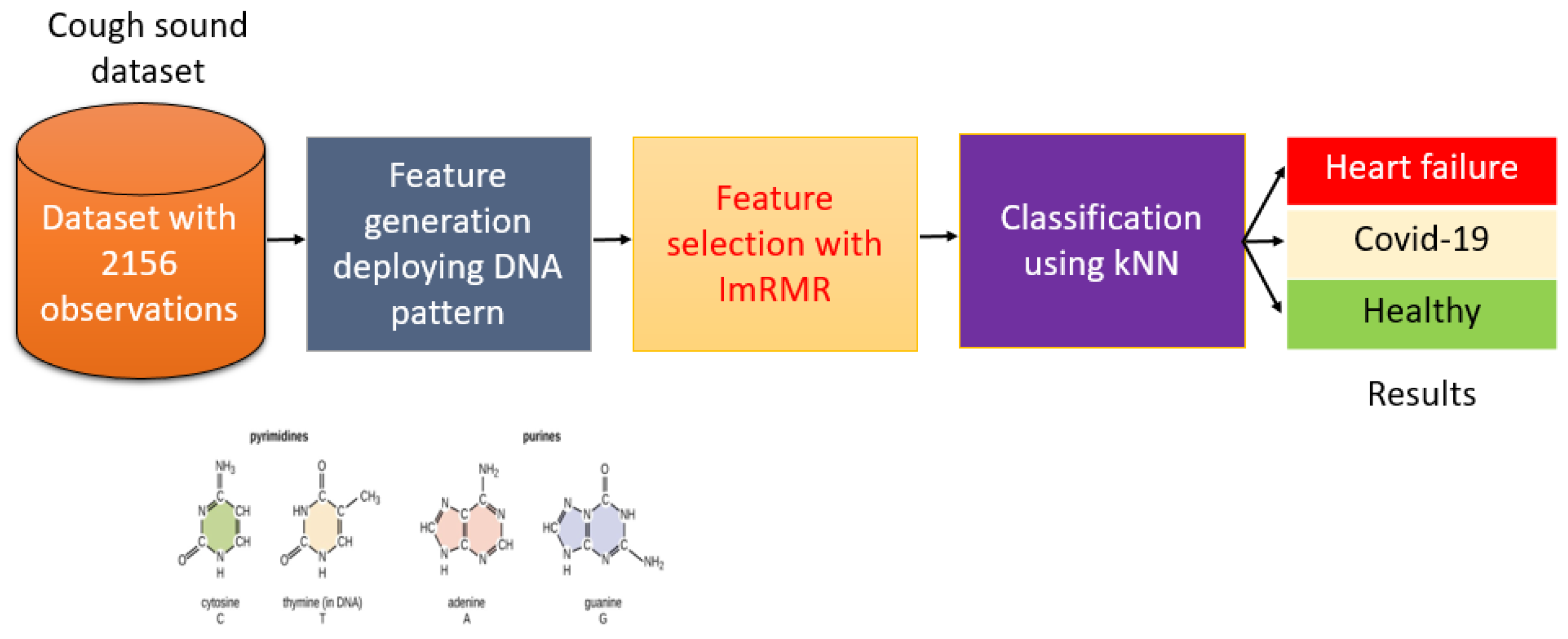ALS Communication Device: Eye Control Glasses Revolutionize Assistance
The ALS communication device represents a monumental leap in assistive technology for ALS patients, enabling them to express their needs and connect with loved ones despite the challenges posed by motor neuron disease. As awareness surged, particularly after the viral ALS ice bucket challenge, it became clear that innovative solutions were essential for improving the quality of life for those affected by this debilitating condition. Eye Control glasses, a groundbreaking product from an Israeli startup, are specifically designed to help ALS patients communicate through eye movements, offering them freedom and autonomy like never before. These advanced communication aids for disabled individuals could potentially change the landscape of interaction, allowing users to convey messages effortlessly. With the continued support of the community and crowdfunding initiatives, the future of communication for ALS patients looks brighter than ever.
The communication tool for ALS sufferers is not just pivotal for their daily interactions, but it also embodies the spirit of innovation in the field of technology aimed at assisting those with severe disabilities. This revolutionary device allows individuals affected by motor neuron diseases to regain their voice through cutting-edge methods like Eye Control, which utilizes sophisticated eye-tracking technology. By integrating such aid, we can redefine how individuals coping with paralysis engage with their surroundings and converse with family and friends. In a world where communication is vital, these advancements represent hope and empowerment for countless lives. With initiatives like community crowdfunding, the potential reach of these groundbreaking devices continues to expand, ensuring that help is always within reach.
Understanding the Impact of ALS and Communication Challenges
Amyotrophic lateral sclerosis (ALS), known as motor neuron disease, is a progressive neurological disorder that affects nerve cells in the brain and spinal cord. As the disease advances, it leads to muscle weakness, atrophy, and eventual paralysis of nearly all voluntary muscles, leaving patients in a state of communication distress. Patients are often left unable to speak or move, relying heavily on assistive technologies for ALS to communicate with loved ones and caregivers. Despite the widespread awareness generated by the ALS ice bucket challenge, many individuals remain unaware of the profound implications of this debilitating disease.
For patients with ALS, the only fully functional part of the body may be their eyes. This reality has paved the way for revolutionary communication aids for disabled individuals, such as specialized devices and technology solutions. The inability to verbally communicate can lead to feelings of isolation and frustration, making it crucial for families and caregivers to implement effective communication methods. Understanding this emotional impact can foster empathy and encourage support from the community in raising awareness about ALS.
Innovative Solutions: Eye Control Glasses for ALS Patients
Eye Control glasses represent a cutting-edge approach in assistive technology for ALS patients. Developed by an innovative Israeli startup, these glasses allow users to communicate effortlessly by tracking eye movements, thus transforming a simple glance into meaningful dialogue. Integrating infrared cameras and small computing devices, the glasses provide patients with the ability to send commands and messages to their families, enhancing their quality of life. This modern communication aid is particularly important given the progressive nature of ALS, as it directly addresses the pressing need for effective communication tools.
Moreover, the significance of such tools extends beyond mere functionality; it empowers ALS patients by fostering independence. With customizable commands and preset messages, users can express their needs or preferences, a capability many took for granted before the onset of their condition. The launch of the Indiegogo campaign to fund production of these Eye Control glasses serves not only as a financial initiative but also aims to rally community support and heighten awareness about the daily challenges ALS patients face in communication.
The Importance of Community Support for ALS Awareness
The ALS ice bucket challenge served as a powerful reminder of the importance of community involvement in supporting individuals with motor neuron disease. However, it also exposed the gap in understanding about the challenges these patients endure daily. Community support is critical in advancing research, funding assistive technologies for ALS, and fostering a more inclusive society for individuals with disabilities. Increased public awareness can lead to greater advocacy and initiatives aimed at improving the lives of those affected by ALS.
Effective engagement is vital; hosting awareness events, fundraising activities, and informational campaigns can profoundly impact the ALS community. Encouraging discussions around ALS and assistive technologies not only sheds light on the complexities of the disease but also encourages those affected to share their experiences. By joining forces, we can create a stronger advocacy network, amplifying the voices of ALS patients and promoting the use of innovative communication aids, like the Eye Control glasses.
Contributing to Change: How to Support ALS Patients
Support for ALS patients goes beyond the individual; it encompasses a broader societal approach to addressing needs. One effective way to contribute to change is by participating in campaigns like the Indiegogo initiative for the Eye Control glasses. Contributions play a vital role in not only bringing innovative solutions to life but also in advancing research and facilitating new developments in assistive technologies. The public’s involvement can enhance the visibility of this critical cause, ensuring more patients gain access to essential tools that improve their communication.
Additionally, engaging in conversations about ALS and sharing informative resources on social media can raise awareness and encourage more people to join the fight against this crippling condition. Each contribution, whether financial or through increased awareness, helps to expand the understanding and offerings around assistive technology for ALS, ultimately fostering a more supportive community for those who are facing communication barriers due to motor neuron disease.
Transforming Lives: The Future of Communication Aids
As technology advances, the future of communication aids for individuals with ALS holds significant promise. Innovations like the Eye Control glasses exemplify the potential for technology to bridge the gap between ALS patients and their loved ones. With ongoing research and development, we can anticipate even more effective devices that cater specifically to the needs of these patients, enabling them to express themselves more fluidly and enhance their social interactions.
The journey toward improving assistive technology for ALS patients is ongoing, and it is driven by the collective efforts of innovators, researchers, and advocates. With a focus on accessibility and affordability, future developments could lead to further breakthroughs that empower not only ALS patients but also those with other motor disabilities. Embracing these advancements not only benefits patients but also fosters a deeper understanding and compassion within society, paving the way for a future where communication limitations become a thing of the past.
Educational Initiatives Around ALS and Assistive Technologies
Educational initiatives play a pivotal role in spreading awareness about ALS and the available assistive technologies. By launching workshops, seminars, and online courses, communities can become informed about motor neuron disease, its impacts, and the innovative solutions, like Eye Control glasses, available to patients. These educational endeavors create a platform for discussions, enabling families and caregivers to learn about the latest advancements in communication aids and how they can directly support those affected by ALS.
Furthermore, increasing educational efforts also targets healthcare professionals, equipping them with knowledge regarding the latest technology and methodologies for supporting ALS patients effectively. As more information reaches the public sphere, stigma around disabilities diminishes, paving the way for an inclusive environment where ALS patients can thrive and communicate without barriers. By emphasizing education, we equip both the community and healthcare professionals with the tools needed to make informed decisions and create supportive networks.
Inspiring Hope: Success Stories from ALS Patients
In the face of challenges posed by ALS, many patients find hope through personal stories of resilience and success. Hearing about individuals who have successfully utilized assistive technologies, like Eye Control glasses, can inspire those currently facing the struggles of motor neuron disease. These narratives highlight the critical role of innovation in transforming lives, showcasing how patients have regained control over their voices and their interactions with the world.
Celebrating these achievements not only uplifts the ALS community but also galvanizes support for further advancements in medical technology. Sharing success stories can encourage investment in research and development, motivating startups and organizations to dedicate resources toward creating life-changing communication aids. By focusing on positive outcomes, we foster a culture of hope that can propel the fight against ALS forward.
The Role of Policy in Supporting ALS Patients and Technologies
Public policy plays a crucial role in shaping the landscape of support for ALS patients. Legislative measures that promote funding for research, assistive technology development, and public awareness campaigns are essential for improving the quality of life for those affected by motor neuron disease. Advocacy for policies that support innovation in communication aids, like Eye Control glasses, can lead to broader access and affordability for patients, ensuring that essential technologies reach those in need.
Moreover, active engagement with policymakers can bring ALS issues to the forefront, leading to necessary reforms and funding allocations in healthcare. Encouraging discussions at local, state, and national levels can create a robust framework for integrating assistive technologies into everyday life, thus transforming the support system for ALS patients. By aligning community efforts with policy changes, we can create a synergistic approach that enhances the living conditions and communication capabilities for individuals battling ALS.
Finding Your Place in the ALS Support Community
Finding your place within the ALS support community can provide significant comfort and resources for both patients and their loved ones. Whether it’s through online forums, local support groups, or national organizations, these spaces enable individuals to share experiences, advice, and emotional support. Engaging with others facing similar challenges fosters a sense of belonging that can be immensely beneficial for those navigating the complexities of ALS.
Additionally, these communities often serve as hubs for information about the latest assistive technologies, treatment options, and research developments. Being part of a network allows individuals to stay informed and advocate for new innovations that may improve their lives. From participating in fundraising events related to the ALS ice bucket challenge to supporting the production of devices like Eye Control glasses, community involvement becomes a powerful means of making a difference.
Frequently Asked Questions
What is an ALS communication device and how does it help patients?
An ALS communication device, such as the Eye Control glasses, is designed to assist patients with ALS (Amyotrophic Lateral Sclerosis) in communicating effectively. These devices often utilize eye-tracking technology to allow users to send messages or commands through eye movements. This is particularly beneficial for those with advanced motor neuron disease, where muscle control is severely impaired.
How do Eye Control glasses function as an ALS communication device?
Eye Control glasses function by utilizing an infrared camera and a small integrated computer to detect specific eye movements. This technology interprets these movements into commands that can be heard through a connected speaker or sent to smartphones via Bluetooth, enabling ALS patients to communicate with others effectively.
What role does assistive technology for ALS play in improving patients’ lives?
Assistive technology for ALS, like the Eye Control glasses, plays a crucial role by providing means for non-verbal communication. This technology helps patients maintain their independence, engage with family and friends, and express their needs, which significantly enhances their quality of life despite the progressive nature of motor neuron diseases.
Why are communication aids for disabled individuals important, particularly for ALS patients?
Communication aids for disabled individuals, especially for ALS patients, are vital because they serve as a bridge to connect with loved ones and caregivers. These devices alleviate feelings of isolation and frustration by enabling patients to express their thoughts and needs, fostering emotional well-being and improving their social interactions.
How can the ALS ice bucket challenge help raise awareness for ALS communication devices?
The ALS ice bucket challenge brought significant attention to ALS and highlighted the need for innovative solutions, such as ALS communication devices. By supporting campaigns like those from Eye Control, it further raises awareness and generates funds that can be directed towards developing crucial assistive technologies for ALS patients.
What features do Eye Control glasses offer to individuals with motor neuron disease?
The Eye Control glasses offer features such as eye-tracking technology to create custom commands, the ability to select from predefined sentences, and Bluetooth connectivity to smartphones. These functionalities provide ALS patients with a personalized communication experience while being affordable and easy to use.
How can I support the development of ALS communication devices like Eye Control?
You can support the development of ALS communication devices such as Eye Control by contributing to crowdfunding campaigns on platforms like Indiegogo. Your donations help fund the production of these innovative glasses, ultimately enhancing communication options for ALS patients and improving their day-to-day lives.
What advancements in assistive technology for ALS are being made today?
Today, advancements in assistive technology for ALS include the development of eye-tracking glasses that allow for better communication, mobile apps for easier interaction, and continuous improvements in user interface designs to enhance user experience for patients with motor neuron disease.
| Key Points | Details |
|---|---|
| Popularity of the ALS Ice Bucket Challenge | It went viral on social media with many celebrities and the public participating, though many were unaware of its purpose. |
| Understanding ALS | Amyotrophic Lateral Sclerosis (ALS) is a motor neuron disease that leads to muscle wasting and paralysis. |
| Communication Challenges | People with ALS primarily communicate through eye movement as other body parts become non-functional. |
| Eye Control’s Solution | An Israeli startup has developed screen-free glasses that translate eye movements into vocal commands. |
| Device Features | The glasses use an infrared camera and transmit messages via Bluetooth, enabling communication. |
| User Customization | Patients can create specific commands or select from 15 pre-existing sentences to communicate. |
| Funding and Development | The startup has launched an Indiegogo campaign to support production and improve the device. |
| Impact on ALS Patients | The Eye Control glasses aim to significantly enhance communication for ALS patients affordably. |
Summary
The ALS communication device is a groundbreaking initiative designed to improve the daily lives of those suffering from ALS. This innovative solution, the Eye Control glasses, empowers patients by enabling them to communicate effectively using just their eye movements. As families and caregivers can understand their needs, the isolation often felt by ALS patients can be alleviated. Ultimately, such advancements represent a significant step towards enhancing quality of life for those who are affected by this debilitating disease.








